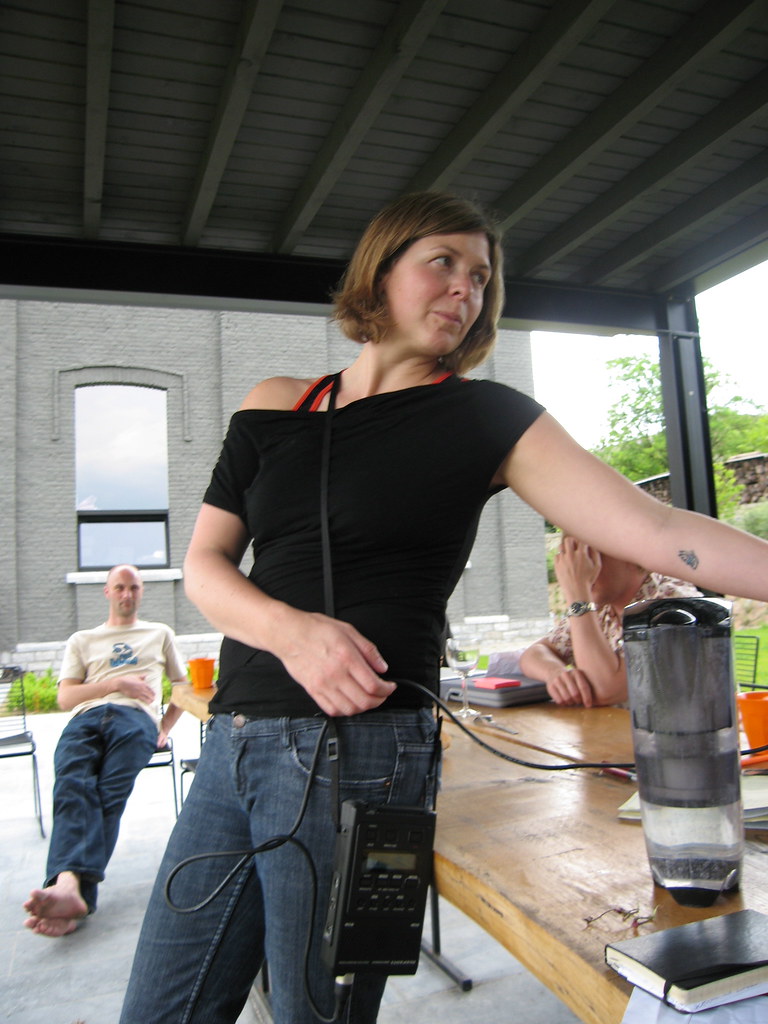From design economies to design ecologies
Abstract
Three years ago, I co-authored Massive Change, a book about “the future of global design.” It was not about the world of design; it was about the design of the world. In that sense, rather than looking at conventional design disciplines (architecture, graphic design, interior design, product design), we looked at 11 key global systems, or realms of exchange, which we named “design economies” - from urban design to materials science to politics. The value in the research for this exercise, for me, was the information gathering by way of dialogue: I started a radio show for which every week for a year I went live to air with thought leaders, across disciplines. These interviews were edited down by me for the book, and the insights became my compass while writing the bulk of the rest of the book. Since then, I’ve worked at IDEO in California, where I’ve had the experience of transitioning from a tech-centric to a human-centric approach to design. As a result, I’ve reflected back on the ideas rooted in Massive Change and feel that “design economies” might better be regarded as “design ecologies”. In the spirit of iteration and Luminous Green I would like to share my thoughts on this in more detail. Key moments sprinkled throughout my talk will also include “the power and promise of design”, “design for social innovation” (as seen through a handful of case studies), and “sustainability through storytelling”.
Transcript
This is the transcript of the talk by Jennifer Leonard at the Luminous Green Symposium in 2007
Hello everyone! Before I begin, I wanted to let you know that the only thing I'm going to be projecting today is my voice. I think Maja put forward a good challenge for us, so I have decided not to use my usual power-point presentation today. This makes me wee bit vulnerable, but actually that's a good thing.
I am here to talk about change, as in 'Massive Change', which is a book, a radioshow and a travelling expo that I was involved in a few years ago. Massive Change was about the future of global design, whereby 'future' means something like 'predicting the present', 'design' means the 'design of the world', rather than being about the world of design and 'global' is in there because Massive Change focuses on global challenges such as energy-use, shelter, climate change, mass-urbanisation… the list goes on.
Today, this will be an interactive session. I will begin by talking a little bit and then asking you to join it. I'll start with showing you some maps that I made when I set out on my mission that became Massive Change. This is a map of experts and thought leaders that where working on the 'global challenges'. Just to give you an idea of the complexity of the process. Massive Change is divided into 11 key subject areas, like the urban realm, movement, energy, information, image, market, materials, military, manufacturing, health and living, wealth and politics.
When the map started taking shape, it became obvious that it is really true that things don't live in isolation - just look at all the arrows connecting the different fields and people! There is an amazing interconnectivity here. We started by naming these diagrams 'design economies', but looking back I feel much more comfortable with the term 'design ecologies'.
The next step was to select people for my radioshows. The content generated during the radioshows became a research tool. It was a way to broadcast the stories that don't often make it into the conventional news reporting. Many of the people I interviewed would not call themselves designers at all. However, in the sense of our project these are the people that are actually designing, that is using their skill-sets to develop solutions to our shared problems. This way journalism and design came together, because I think it's important to tell the stories behind the design processes that shape our world.
To quote Will Durant, 'Civilization is a stream with banks, the stream is sometimes filled with blood, from people killing, stealing, shouting and doing the things historians usually record.' - And I would like to add: the stories that media usually report on - 'While on the banks, unnoticed, people are building homes, making love, raising children and singing songs.'
The story of civilization is the story of what happens on the banks. So it was the story of what goes on there that I wanted to talk about in the radio shows. I do believe that is that kind of storytelling that will sustain us.
Let us focus on these 11 design ecologies together - we will assign a subject area to each table and for 15 minutes I'd like you to brainstorm on these subjects from the perspective of ecology. How can you think about the urban realm or politics as an ecology? What stories come to mind? Please put them down on the post-it notes, so we can bring them together later.
In the spirit of design we want to build on the good ideas of others. Massive Change has so far perhaps been 'passive change' in that it has been describing top-down design economies. To answer Maja's question about what I think has changed since of Massive Change - I would like to try to move towards a more active change - looking at the processes of interconnection, at the bottom-up - design ecologies.
Article
Earth Day Voices: http://www.worldchanging.com/archives/006498.html
Biography
Jennifer is a member of IDEO’s Design Community in California. She co-authored Massive Change with Bruce Mau, a book on the future of design. She is a graduate of the design think-tank the Institute without Boundaries, the University of Western Ontario and Queen’s University. She studied at The Graduate School of Journalism at the University of Western Ontario, where she won the Top Researcher award and Norman Jewison prize for creative writing.
